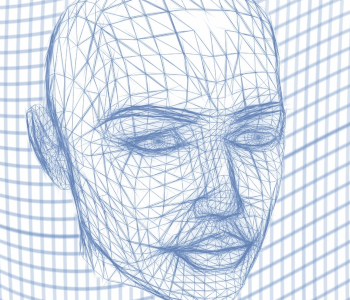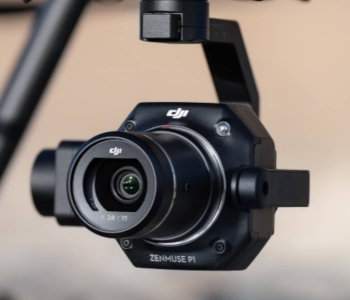How 3D Scanning Can Be a Valuable E-Commerce Tool
E-commerce is simply defined as the act of selling or buying goods and services online. The practice has been around for decades but was embraced to an unprecedented level in the last year as the pandemic forced most of the world to stay at home.
Despite the success of e-commerce, there are a few innate limitations of buying or selling anything online. It is better for everyone involved if customers can see the products before they purchase them. This reduces the chances of costly product returns and improves overall customer satisfaction. This is where 3D scanning can come in handy.
What is 3D scanning?

3D scanning is a method by which the geometry of a real-world object is measured to create a digital 3D model. Depending on the 3D scanning technique used, the digital model can also simulate the color and texture of the object.
In contrast to older methods of contour measurement, 3D scanning is a non-contact method. Through the use of media such as visible light or lasers, measurements of objects can be done without the contact of any measuring instrument. This makes 3D scanning ideal for the handling of fragile items. It’s also a very fast method, although data processing can require high-end equipment.
How 3D scanning can help your e-commerce business
When done right, 3D assets can accurately reflect the appearance and size of their reference objects. Digital models have been heavily used in industrial applications as they can be analyzed and measured an infinite number of times.
This is the same benefit that 3D assets offer to an e-commerce platform. With 3D models, your customers can look around a product as if they were looking at the real thing. The mere fact that 3D models look great and are fun to play around with can already be a factor that draws customers to your website. According to the 3D scanning service Reality3D, the use of 3D renderings of products can increase customer conversion by at least 300 percent.
3D assets are arguable useful in selling any type of product. However, there is one market where it could prove revolutionary – fashion. Shopping for clothes and shoes online is always problematic because it almost always involves a guessing game.
Will those pair of shoes fit you or is that shirt the right color for you? Without the benefit of actually trying them on, there is always a chance of customers getting disappointed. This has resulted in the clothing industry having to handle a 56% product return rate – the highest of any e-commerce sector.
3D scanning can also work on the customer side. Some smartphone apps can now be used to accurately scan the body of a user to quickly get the measurements of their torso, waist, legs, and feet. This information can then be transmitted to an online seller so that they can better assist the customer in finding clothes or shoes in their size.
Taking it another step further is the technology of Augmented Reality (AR). This combines 3D digital assets with real-world objects via the display screens in our devices. AR can allow you to try on clothing items in a virtual environment, just to see if they fit your fashion style. This has also proven to be useful in selling furniture as you can try to place the virtual models in various spots in a house.
How to create digital 3D assets
Now that you already have products to sell, how can you turn them into digital models? There are a couple of different methods available that vary in complexity, each with a unique set of benefits and drawbacks.
Photogrammetry

Photogrammetry is considered the simplest technique for 3D scanning. Using a standard camera, photogrammetry only requires taking a series of overlapping images of the object being modeled taken from all possible angles. These photos are then processed by photogrammetry software to deduce the geometry of features and generate a 3D model.
This is often the default technique for 3D scanning because it does not need sophisticated equipment. You just need a good camera, a good lighting setup, and ideally a turntable for the object being scanned. You will also have to pay for a subscription to good photogrammetry software.
An added benefit of photogrammetry is that it also captures color and texture data. This can be used as an overlay on the 3D model to create an asset that more accurately simulates the appearance of the real-world object.
One limitation of photogrammetry is that it may not be appropriate for all types of products. Objects with reflective surfaces can be challenging to model using photogrammetry unless you’re willing to scuff those surfaces with some sandpaper.
Laser scanning
As the name implies, laser scanning uses an array of lasers to scan an object. A laser scanner is actually made of two parts – a laser emitter and a sensor. Lasers hit the surface of the object being scanned and are then reflected back to the sensor. Using time-of-flight principles, this data is processed to determine the geometry of the scanned object.
Despite seemingly using more advanced technology, there are now handheld laser scanners that are just as easy to use as any mobile device. Laser scanners have gotten a lot better in the last couple of years. However, there is still some skill involved in making sure that the model from laser scanning comes out coherently.
When done right, laser scanning can deliver more accurate models than photogrammetry. This is valuable if you’re selling high-precision parts to industrial customers. However, laser scanning also struggles in capturing the details of reflective surfaces. This can be remedied by painting them over or scuffing them.
3D modeling from scratch
If you have someone in your team with 3D modeling skills, then you can just have them come up with 3D models for your products. This skips the 3D scanning step and is more of simple digital asset creation. You will likely end up with nicer-looking models in this method, although they may be less accurate.
Should you choose to create 3D models without scanning, make sure that the models still resemble the actual products. Nothing is worse than an e-commerce seller who deals with deceptive advertisements. 3D models can also be designed with the actual measurements of their real-world counterparts.
No matter which method you choose, the output should be a 3D model that can be rotated, zoomed, and measured by the end-user.
How 3D models can be integrated into an e-commerce platform
Successfully integrating 3D models into your e-commerce store takes more than just scanning your products with your phone. As with any business move, this requires some savvy and significant investment. Here are some things to consider before making this transition.
Asset creation

As for asset creation, you may choose to scan your products yourself or have a third-party company do it for you. A DIY approach may be more practical if you just run a small online store selling a few products. If you have never tried 3D scanning before, it may be better to hire an expert to do it. Companies like Reality 3D and Scandy are good options, among a few dozen others.
Asset integration
If you plan on hosting 3D models in your store, then you should take the time to research which e-commerce platforms provide such a service. 3D models are now fairly common and there are now several platforms that have built-in plugins to display them. If your platform does not support it yet, you can try requesting them to include this feature.
Take note that you will also need to consider how long a 3D asset will take to load in your e-commerce store. According to a study done by Google, 53% of mobile website visitors tend to navigate away from an item listing if it takes more than 3 seconds for all assets to load. You may have to resort to other strategies to make sure that your potential customers stay on your page for just a few seconds longer.
Performance assessment
It also makes good business sense to keep track of the performance of your e-commerce platform once you have made the transition to using 3D models. The easiest way to do this is to check if there has been an increase in sales. You can also use other measurement tools such a website or social media analytics. Are you gaining more visitors or are they leaving your page sooner because of a crowded layout?
Final thoughts
As more retailers move towards the e-commerce space, the online market has also become increasingly competitive. Making customers take notice of you will take more than just having superior products. Ensuring a good customer experience can go also go a long way towards conversion and gaining customer loyalty.
Integrating 3D models of products is becoming a more common practice. Photos are old hat – 3D models can show off the detail of a product in a way that customers will really appreciate. It can take a bit of an investment, though, so it’s best to approach this move strategically.





